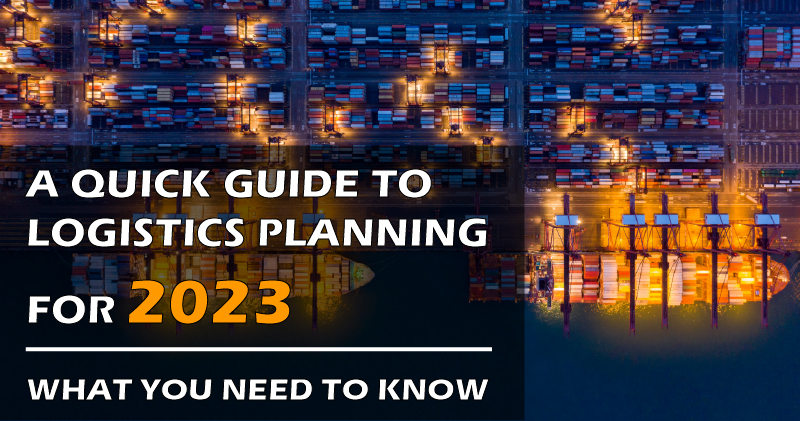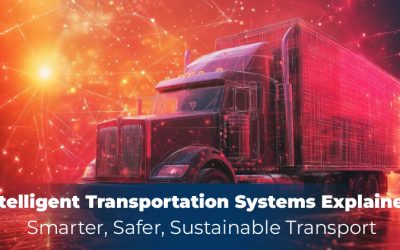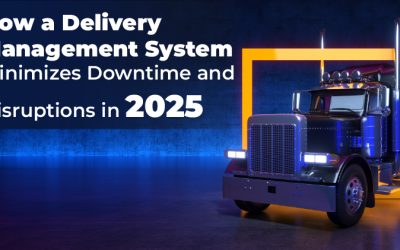
Logistics planning is essential for any business that needs to get products or services from Point A to Point B. As the world rapidly changes, so does the need for a comprehensive and efficient plan to ensure the successful delivery of goods and services. In 2023, logistics planning will be more important than ever, and it requires a comprehensive understanding of the various elements at play.
This quick guide will provide a comprehensive overview of the critical factors that need to be considered when planning for 2023, including the latest industry trends, data-driven planning, and the need for technology. By understanding these key elements and putting them into practice, businesses can create a comprehensive and effective logistics plan to deliver goods and services in 2023.
Understanding Key Trends in the Logistics Industry
As with any industry, there are a variety of trends that need to be considered when creating a logistics plan. These trends can either positively or negatively impact the logistics planning process, and it is essential to be aware of each one. Here is a quick overview of some of the logistics industry’s key trends when creating a plan.
Safety and Security – Safety and security are essential when creating a logistics plan, as any breach in security could result in numerous problems for both customers and businesses. As such, logistics providers must comply with all safety and security regulations.
Growing Demand for E-commerce – As e-commerce continues to grow, so does the demand for efficient and cost-effective logistics services. E-commerce businesses must provide their customers with quick, reliable, cost-effective delivery services, and trucking and transport industries help them do so.
Rise in Freight Volumes – The rise in freight volumes is a key trend that will need to be factored into logistics planning in 2023. More goods are being transported worldwide, so that the current logistics infrastructure will be pushed to its limits. As such, companies will have to find ways to increase capacity so that goods can be transported successfully.
Data-driven Logistics Planning
One of the most important elements of logistics planning is data. It has become increasingly essential to use data-driven logistics planning to reduce costs, increase efficiency, and improve customer service. Data-driven companies can forecast demand, optimize routes, and identify areas of risk. This enables them to make changes to their logistics planning that will significantly and positively impact their business.
When creating a logistics plan, it is essential to identify the relevant data that will inform the strategy and the areas the data will impact. Here are a few examples of data that can be used for logistics planning.
Your data must be precise and relevant if you want to ensure a long-lasting data-driven logistics planning strategy:
- Establish goals and standards for data format; without them, you will be left with a very detailed set of data that is challenging to understand or integrate with the more extensive network. Additionally, the absence of formats encourages data consistency, which results in effective operations.
- One version of the truth that is clearly understood is to constantly share the most recent information to ensure consistency throughout departments and across international divisions.
- Systems must be in place; analyze your past data to realize your capabilities. Include important parameters like demand per asset, location, appropriate storage figures, and peak periods in your digital planner or with a third-party tool like Transmetrics. Adding accurate data to these will put you one step ahead.
 Leveraging the New Technologies for Logistics Planning
Leveraging the New Technologies for Logistics Planning
As logistics planning rapidly evolves, businesses must find ways to stay ahead of the curve. One way of doing this is by leveraging new technologies for logistics planning. Here are a few technologies that can be used for logistics planning.
Artificial intelligence (AI) – AI has become increasingly prevalent over the last few years, and it can be used for various functions within a business. Using AI for logistics planning can help optimize routes for an efficient supply chain and forecast demand while providing customers with a personalized experience.
Blockchain is a new technology that piqued many industries’ interest, including logistics. Utilizing blockchain for logistics planning will allow businesses to create decentralized networks that are secure and efficient. This is particularly useful in the logistics industry due to its global nature.
Augmented reality (AR) – AR is becoming increasingly popular within the logistics industry due to its ability to provide real-time data and information. AR can be used for various functions within logistics planning, including forecasting demand and creating 3D models of transportation routes.
Calculating Costs for Logistics Planning
When creating a logistics plan, businesses must consider how much each element will cost. This is particularly important when selecting various modes of transportation, as each one will have a different cost. Logistics planning involves considering the costs of shipping, warehousing, and transportation. Shipping costs can be reduced by finding the most suitable shipping company and negotiating rates. Warehousing costs include rent and any extra features such as insurance. Transportation costs can be reduced by finding the most suited transportation method.
Working with Third-Party Logistics Providers
When creating a logistics plan, businesses inevitably encounter certain elements they need help to carry out themselves. In these situations, outsourcing these elements to a third-party logistics provider is often beneficial. When outsourcing the logistics for specific areas of your plan, it is essential to consider a few factors.
You will need to consider your requirements, the expertise of the logistics provider, and the amount you are prepared to pay. When outsourcing, selecting a logistics provider capable of meeting your future needs is also important. This will help ensure that the logistics provider can grow with your business and be a valuable asset.
Developing a Comprehensive Logistics Plan for 2023
Once you have considered the industry’s key elements and trends and have identified the data that needs to be considered in the logistics plan, you can begin to create the plan. When creating the plan, it is vital to consider the various elements and put them into practice while keeping an eye on the future.
TMS-Digital is the perfect choice for all your trucking, logistics, and supply chain needs. Our team of experts has extensive knowledge of logistics planning for 2023 and can provide a comprehensive solution tailored to meet your business requirements.
At TMS-Digital, we understand that each customer has unique needs, so our team strives to create custom plans that fit perfectly with your business objectives. We take the time to understand your trucking and supply chain goals, so we can develop a tailored plan to meet them.
We have years of experience in the trucking industry and pride ourselves on providing our customers with the highest quality service. Get in touch with TMS-Digital today to find out how we can help you develop a comprehensive logistics plan for 2023.









